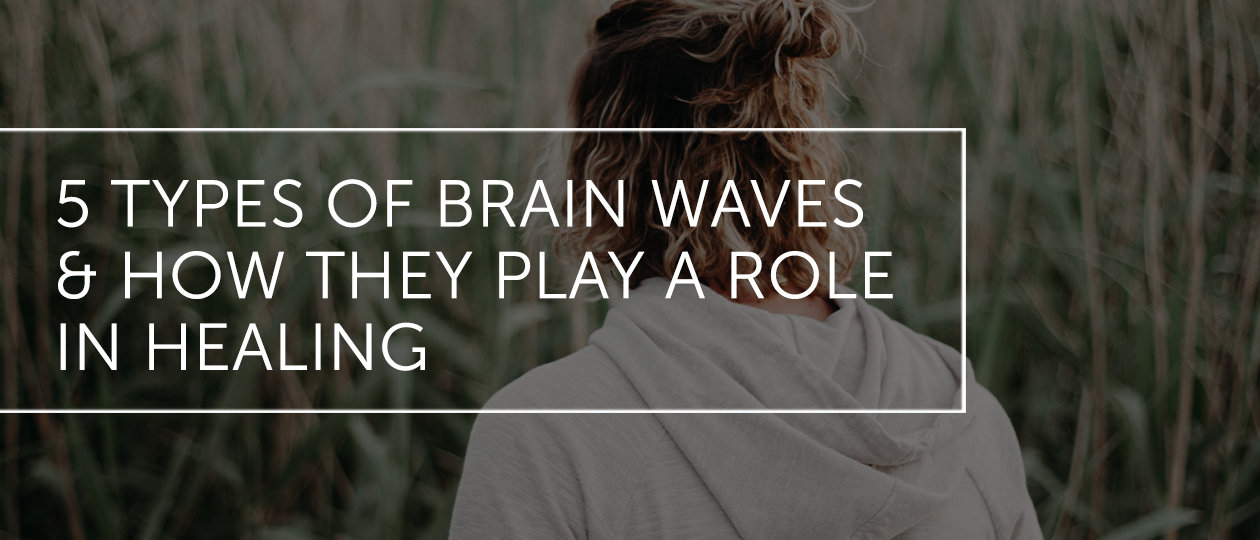5 Types of Brain Waves and How They Play a Role in Healing
It’s obvious we change dramatically from childhood to adulthood, from the way we look to the way we speak. There are also internal changes related to our brain waves that we can’t see.
One of the most fascinating things about how we are made that nobody knows and something I’ve been saying for years is that our brain is programmed for both fear and love.
People may say, “oh that’s not true, that’s too simplistic,” but for the first 6 to 8 to 12 years of life we live in a delta/theta brain wave state. Delta/theta is a non-stress brain state, which means a child can be thinking and doing things that for an adult would be stressful.
When we transition out of the non-stress brain state and from childhood to adulthood that is when we are supposed to choose the non-stress way of living for the first time and for the rest of our lives. In my opinion it is proof that we are supposed to choose love over fear, but of course the paradox is only about 1 in about 100 people do so. The other 99 keep choosing to live like a 5-year-old and in a state of fear and stress!
It’s remarkable and almost no one, even people in the field, knows this. In our early years, we live in seek pleasure and avoid pain mode (the definition of stress) as it is when we are most vulnerable. It is not acting as harmful stress in our body, however, because we are in the delta/theta brain wave state. Then almost magically, and the age is different for different people, somewhere typically between the age of 6 and 12 the brain state shifts out of delta/theta and now it is whatever you choose. If you choose the stress state you get it, but you can choose to focus on love and be in a non-stressed brain mode.
Most of us adults, unfortunately, spend the majority of our lives in beta state – alert and stressed out! And when our stress level spikes it lowers our immunity, leading to illness and disease.
There has been a lot of recent research on how we can shift our brain waves, especially through meditation. Research has shown that meditation can help fine tune the positive and productive brain waves. In fact, a Harvard University MRI study showed that meditation leads to thicker gray matter in the parts of the brain that are associated with compassion and self-awareness.
When we lower the brain wave frequency to alpha, for example, we are optimized to retain new information, learn a new language, analyze complex situations and even be in what sports psychologists call “The Zone.” Part of this is because even a slightly decreased range of electrical brain activity can lead to significant increases in feel-good brain chemicals like endorphins and dopamine.
Today I want to briefly review the five types of brain waves and how they reflect our different states of consciousness. I encourage you to do more research on this as it is truly fascinating!
Gamma
- Frequency: 32 – 100 Hz
- Associated state: Heightened perception, learning, problem-solving tasks
Gamma brain waves are the fastest measurable EEG brain waves, and have been equated to heightened perception or a peak mental state when there is simultaneous processing of information from different parts of the brain. Gamma brain waves have been observed to be much stronger and more regularly observed in very long-term meditators like Buddhist Monks.
Beta
- Frequency: 13-32 Hz
- State: Alert, normal alert consciousness, active thinking
Beta brain waves are highly engaged when we are in active conversation, making decisions or focusing on a new task.
Alpha
- Frequency: 8-13 Hz
- State: Physically and mentally relaxed
Alpha brain waves are some of the most easily observed and were the first to be discovered. They become detectable when our eyes are closed and the mind is relaxed during activities like yoga or during certain states, such as right before falling asleep or when we are in a highly creative and artistic mind set.
Theta
- Frequency: 4-8 Hz
- State: Creativity, insight, dreams, reduced consciousness
Theta waves indicate deep relaxation and occur more frequently in highly experienced meditation practitioners. They are strongly detectable when we’re dreaming or even in deep meditation or daydreaming. Theta brain waves can also increase when we’re doing a task that is so automatic that the mind can disengage from it, such as brushing our teeth or showering, Research has shown a positive association of theta waves with memory, creativity and psychological well-being.
Delta
- Frequency: 0.5-4 Hz
- State: Sleep, dreaming
Delta brain waves are the slowest of all brain waves and are most engaged when we are in a deep state of sleep or in a dreamless state. This is also the state where healing and rejuvenation are stimulated, which is why it’s so crucial to get a good night’s sleep.
We’re body, mind and spirit and each of these speak a different language: the body is frequency, the conscious mind is words and the unconscious mind or spirit is pictures.
I started looking for the perfect frequency to heal the body, the perfect words to heal the mind and the perfect images to heal the unconscious and subconscious. It took me over 30 years to find all of those pieces and test them and put them into a push button system -- The Master Key.
You can read more about it on my website. I know you are busy, but the great thing about The Master Key is that you can use it at your convenience --- you can do it in the car, while doing laundry or even on your walk.
The human brain is fascinating. There are so many things we do not know! We do know, however, that we can alter our brain waves and, as a result, our physical and mental well-being.
Have a blessed, wonderful day!
Alex Loyd




Add a Comment